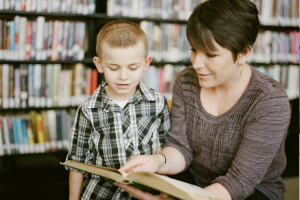How to Talk With Your Adolescent About Their Drug or Alcohol Use
 One of the most frightening experiences for any parent is the moment you realize that your child may have a substance abuse problem. You are scared to death about what they may be taking, the late nights, the change in sleeping habits, the poor grades, or the awful distance growing between you and the person you care so much about.
One of the most frightening experiences for any parent is the moment you realize that your child may have a substance abuse problem. You are scared to death about what they may be taking, the late nights, the change in sleeping habits, the poor grades, or the awful distance growing between you and the person you care so much about.
Most parents desperately want to help their child but they don’t know how. Many feel helpless, anxious, very worried, and some downright scared! Not only are they deeply concerned about the wellbeing of their son or daughter, they also worry about the stigma of addiction, that people will see their child as a “bad kid” and see them as “bad parents.” This is simply not true. Substance abuse comes about as a coping strategy to feel less badly (not because you are bad). Know that you can help your child find healthier ways to cope.
No matter how terrified you feel, know that your love and concern can be a great strength for your child’s recovery from substance use. There is hope that you can restore connection with your child, and help them accept treatment. Techniques to address substance abuse within the family have come a long way even since one or two generations ago.
Helping Those Who “Don’t Need Help” Become Open To Change
One approach that deserves a lot of attention is called CRAFT. It stands for Community Reinforcement Approach and Family Training. Doctors Robert J. Meyers and Jane Ellen Smith developed CRAFT during the 1980s and ’90s. It has just begun to get wider use since 2009. CRAFT is a powerful approach because it builds on the caring between family members as part of the solution to get more people into treatment. It helps those struggling with drugs or alcohol to accept their needs for healing and become willing to seek help. Family support is more important to overcoming treatment resistance than you might think.
More than 95% of the 20 million people in the United States with a substance abuse disorder report that they do not need help, says the 2013 National Survey on Drug Use and Health. It’s baffling to see so many people overlook the dire straits of addiction and keep using. Many parents can’t believe that their own child could disregard the obvious dangers of substance abuse and become dependent on a drug or alcohol. These are the actions of people desperate to feel less badly.
Experimentation happens. Since the adolescent brain is not fully developed, it is especially vulnerable to drug or alcohol dependence. During adolescence, the brain’s response to dopamine (which regulates our reward drive) is enhanced.
As Daniel Siegel explains in his excellent book Brainstorm:
The baseline level of dopamine is lower—but its release in response to experience is higher—which can explain why teens may report a feeling of being “bored” unless they are engaging in some stimulating and novel activities. This enhanced natural dopamine release can give adolescents a powerful sense of being alive when they are engaged in life. It can also lead them to focus solely on the positive rewards they are sure are in store for them, while failing to notice or give value to the potential risks and downsides.
Drinking and drug use further heightens the dopamine response. This prompts more reward-seeking behavior that raises the risk of dependence. The adolescent’s impulsiveness and their own sense of logic (which Siegel explains in Brainstorm) also lessen the risks adolescents perceive to their health and survival. To admit, or even understand, that using has become a problem is incredibly hard, especially for adolescents. Taking the drug away means taking away the ‘fix’ for the larger problem (the bad emotional feelings) they fear more than the dangers of addiction.
Often the people in the best position to turn this around are caring parents or loved ones. In one study, nearly two-thirds of families taking CRAFT classes saw a resistant to help a family member become willing to get help — three times the rate seen with other frameworks for families dealing with addiction. Your ability to help is not limited to using CRAFT. The important thing is to find a therapist with the experience and training to work with your child and your family.
Skills to Look for in a Therapist
A trauma-informed approach is necessary to enable your child to feel safe in therapy — safe enough to talk about the emotions that led to using. A therapist who works from a strengths-based perspective also helps each of you find what personal resources, outside relationships, and ideas work best for your unique family. It is important to know the therapist sees you as people first, not as an “addict” or a “bad family” — this non-pathologizing approach honors your full humanity, and strengthens your work toward recovery.
Parents need support too, to work through their own emotions with greater compassion for themselves and the person they want to help. This is especially needed early on, when the child’s refusal to engage and talk about concerns could be the strongest. A therapist with a family systems approach can help family members work together toward health and recovery. Addiction isn’t just the adolescent’s problem — it affects the family, and the whole family needs to respond.
No Need to Let Those Struggling “Hit Bottom”
Whether you use CRAFT and/or work with a therapist, it is important to take action before more serious harm, even death, from substance abuse occurs. When you get the support and information you need, you can begin reaching out to your child with understanding and openness. It is far better to act now, rather than wait for a bad situation to become a crisis to send your message of care and concern.
There are so many new substances available to adolescents, in addition to alcohol. From 2001 to 2014, national overdose death rates from heroin have increased six-fold; deaths from Benzodiazepines (commonly called “benzos”) have increased 5-fold, and deaths from prescription drug overdoses have almost tripled. Becoming aware of the growing number of ways to experiment — and understanding the risks — is daunting for anyone. But it’s important. A parent’s ability to become better informed — even bit by bit — fosters much-needed understanding.
What is involved in the CRAFT Approach?
CRAFT is about offering the support your loved one needs to turn toward treatment and recovery, motivated by self-care. Families learn to communicate with non-judgmental, open-ended questions. Perhaps your current level of anguish doesn’t allow for much compassion right now. Your relationship with your child may be highly distressed and strained. That is why CRAFT works best with the support of a well-led group or trained therapist, combined with self-education.
What Is Involved in Working With a Therapist?
When I receive a call from a family member concerned about a child’s substance use, I usually meet with the parents first. This allows them to voice fears and emotions that worry them, as well as for me to explain my therapeutic approach to them. I want to honor and respect the tremendously important role of the parent. Parents can begin to find the support they need to approach the issues constructively and help their child.
During the next sessions, I meet with the parents and the child, as well as the adolescent alone. We work together to decide what will help the family most effectively and what support they need. It may be that the use has progressed to where a detox program is appropriate or we may catch it in time to continue to work on an outpatient basis. It may be that the parents and child will each work with their own counselor, and as a family other times. Each family and treatment plan is developed personally for what that adolescent and family needs.
Substance use and treatment raises difficult, complex issues, to be sure. A few paragraphs here can hardly do justice to work in therapy, nor give you what you need to face something so extremely important. To help you further understand adolescence, addiction and treatment see More Resources below.
An Example of a Compassionate and Loving Approach to Conversation
You can’t have a true, meaningful conversation with your adolescent — or really anyone — when they are high or drunk. If they come home high or under the influence, your job is to make sure they are safe and alive for the night.
The next day, you can make an opportunity to talk. It may work best to start small with an honest, caring question. For example: “You know, I saw you come in last night, and you looked like you were having a hard time. What’s going on? Can I help? Can I listen? You know, I love you no matter what!” Questions like this are open-ended and non-judgmental. Keeping this approach for each conversation enables a parent to help a child lower their defenses and open up about what they are struggling with.
If I could pick one message here, it would be this: Show your child that you are there for them, that you want to talk and are open. Convey that you want to help them feel less badly – just in a healthier way. The benefit of your compassion is that you become someone your child can turn to for help. That is why using CRAFT can be so effective. Parents who improve their own self-care can better face their loved one’s struggle with substance abuse, and help find a path to healing that improves life for everyone.
More Resources
Books
Beautiful Boy: A Father’s Journey Through His Son’s Addiction by David Sheff
Beyond Addiction: How Science and Kindness Help People Change by Jeffrey Foote, Carrie Wilkens, Nicole Kosanke, Stephanie Higgs
Buzzed: The Straight Facts About the Most Used and Abused Drugs from Alcohol to Ecstasy by Cynthia Kuhn. This is my go-to recommendation for parents and teens for substance education.
Clean: Overcoming Addiction and Ending America’s Greatest Tragedy by David Sheff
Get Your Loved One Sober: Alternatives to Nagging, Pleading, and Threatening by Robert J. Meyers and Brenda L. Wolfe
Inside Rehab: The Surprising Truth About Addiction Treatment–and How to Get Help That Works by Anne M Fletcher. This is a book I recommend often to concerned parents.
Support Groups
Alcoholics Anonymous – AA
Young People in Recovery – local chapters are located nationwide, including Arlington VA and Washington DC
More about CRAFT
I direct all parents and partners to this website:
http://the20minuteguide.com/ – This is the website-based version of CRAFT-lite.
The End of Hitting Rock Bottom by Burt Helm
For parents who want to get trained in CRAFT online:
Personal stories
I Thought I Knew (video) by former users and Partnership for Drug-Free Kids
Tags: alcohol, parenting, parenting advice, parenting skills, parenting tips, teen, teenagers, teens








Leave a Reply